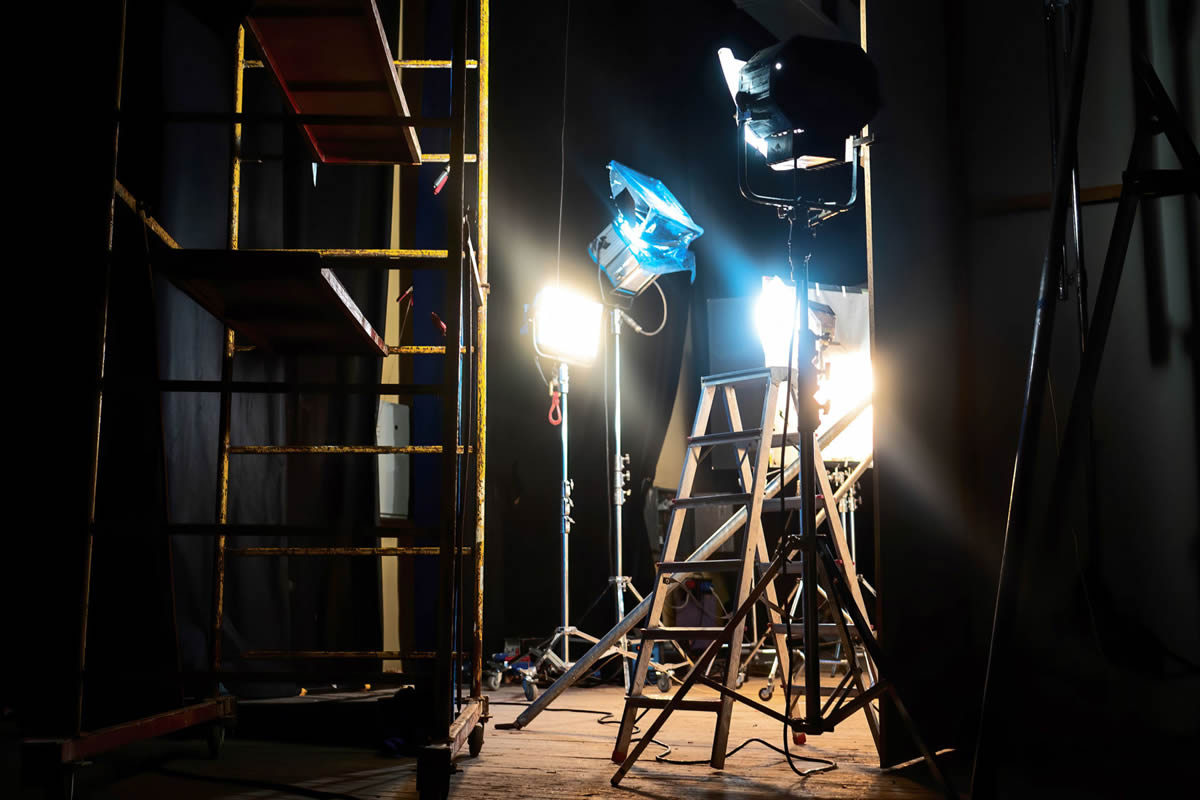Types of Lights Used in Film Production

Lighting equipment is very important to the modern film and video industries. From professional studio cinematographers to content creators, everyone loves extra lighting. Whether you are moving on to your next film production or not, learning about light sources will help. These are some of the most common types of lighting used in film production.
HMI
HMI stands for Hydrargyrum Medium-arc Iodide. It is a metal-halide gas discharge medium-arc-length lamp. Every HMI bulb comes from vaporized mercury and metal halides. The mercury vapor and metal halides are excited by an electrical arc between two electrodes.
This makes the light output and luminous efficiency very high. HMI lamps can put out anywhere from 85 to 108 lumens per watt, which is up to four times as much as a regular incandescent lamp. The exact mix of gases in an HMI bulb allows it to give off light with a 6000K color temperature, which is close to the color of sunlight. What keeps the light from flickering are the electronic ballasts working at a very high frequency. HMI lights can get turned down using pulse width modulation. And you'd often go for HMIs when you require a lot of light to create or add to the look of sunlight shining into a room or light the outside.
Tungsten
Tungsten light sources are the same as incandescent filament bulbs, which were in use at homes and offices all over the world until recently. They have a color temperature of around 3200K. For years, tungsten lighting kits have been the tried-and-true lighting choice for film and video production. They are like the incandescent filament bulbs that you'd usually use for indoor lighting, so they are a great choice for indoor lighting.
Fluorescent
Fluorescent light is a low-pressure mercury gas discharge lamp with a phosphor coating on the inside that glows when heated. Fluorescent lights also give off ultraviolet waves. But they are about ten times cheaper and better for the environment than tungsten lights.
On the Kelvin scale, fluorescent sources are about the same temperature as HMIs, and the light they make is often the same as 5400 Kelvin. However, you can also get them with a 3200 Kelvin tungsten balance. Most of the time, these lights get used in big video and film productions. Cinematographers prefer to use fluorescent lights when HMIs aren't available. This type of lighting is straightforward to use and is a great way to light difficult scenes in a movie. It is also the light of choice for interviews.
LEDs
Light-Emitting Diodes (LEDs) are two-lead semiconductor light sources that have become very popular in recent years as the technology has become cheaper.
These lights are very comfortable to use and offer an eco-friendly option to filmmakers who want to keep their kits light and portable. LEDs have useful features like being able to control the temperature, being powered by batteries, and being small. By adjusting the dimmer on most of the devices, filmmakers can get both cool daylight temperature and warm, yellow tungsten light. These relatively cheap, light, and versatile lights are the present and future lights.
If you are looking for quality grip equipment and grip truck rentals, trust Tiki Grip Electric with all of your film production needs. Contact us to hear about our equipment and reserve your grip equipment today.